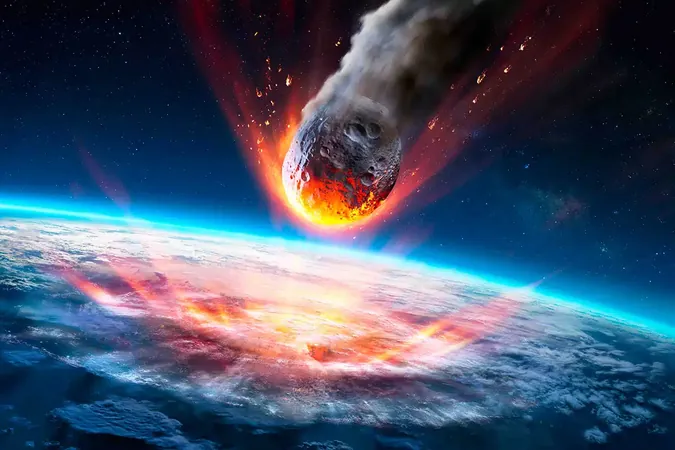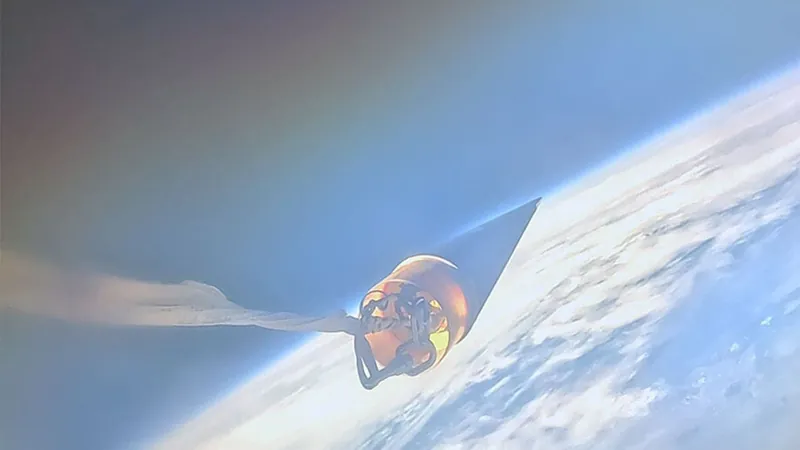
Unleashing the Inferno: How a Gigantic Asteroid Reshaped Earth 3.2 Billion Years Ago
2024-11-22
Author: Wei
A Collision of Catastrophic Proportions
The S2 asteroid’s collision with Earth was a game-changer, creating an enormous impact crater around 500 kilometers in diameter. For a reference point, the asteroid that wiped out the dinosaurs was about the size of Mount Everest; S2 was over four times larger and unleashed chaos on an unimaginable scale.
The Apocalyptic Aftermath
The aftermath of this colossal strike was nothing short of apocalyptic. Earth experienced a dramatic transformation characterized by:
- Massive shockwaves: These waves sent rock and debris hurtling around the planet.
- Boiling Oceans: The intense heat caused large portions of Earth's oceans to evaporate.
- Extreme Temperatures: Surface temperatures soared to a staggering 100°C.
- Megalithic Tsunamis: Massive waves devastated any existing landmasses.
- Darkened Skies: A thick veil of ash and dust shrouded the Earth, blocking sunlight.
Dr. Nadja Drabon, lead author of the PNAS study, painted a chilling picture: “Imagine a rain cloud, but instead of water droplets, you see molten rocks falling from the sky.” The consequences of this impact created a hostile environment that would be lethal to most forms of life.
Surprising Resilience of Life
However, the early Earth was not devoid of life. Despite the catastrophic conditions, simple unicellular microorganisms managed to survive and even thrive. The aftermath of the S2 impact turned out to be a paradoxical boon for life; valuable nutrients like phosphorus and iron were released into the oceans, fostering a boom in non-photosynthetic microorganisms. As Dr. Drabon points out, “Life not only proved resilient but also bounced back very quickly and flourished.”
This astonishing adaptability laid the groundwork for the complex ecosystems that would eventually emerge.
Implications for Astrobiology
The S2 impact event provides profound insights for astrobiologists seeking to understand the potential for life in our universe. It challenges existing notions by illustrating that life can survive and even thrive under seemingly insurmountable conditions. This resilience suggests that our criteria for identifying potentially habitable worlds may be too narrow, as life may flourish in environments previously deemed inhospitable.
As we continue our exploration of the cosmos in search of extraterrestrial life, the story of the S2 asteroid serves as a powerful reminder of Earth’s historical resilience. It demonstrates that extraordinary cosmic events can yield unexpected and profound outcomes on the evolution of life, urging us to remain open-minded in our quest to discover whether we are alone in the universe.



 Brasil (PT)
Brasil (PT)
 Canada (EN)
Canada (EN)
 Chile (ES)
Chile (ES)
 España (ES)
España (ES)
 France (FR)
France (FR)
 Hong Kong (EN)
Hong Kong (EN)
 Italia (IT)
Italia (IT)
 日本 (JA)
日本 (JA)
 Magyarország (HU)
Magyarország (HU)
 Norge (NO)
Norge (NO)
 Polska (PL)
Polska (PL)
 Schweiz (DE)
Schweiz (DE)
 Singapore (EN)
Singapore (EN)
 Sverige (SV)
Sverige (SV)
 Suomi (FI)
Suomi (FI)
 Türkiye (TR)
Türkiye (TR)